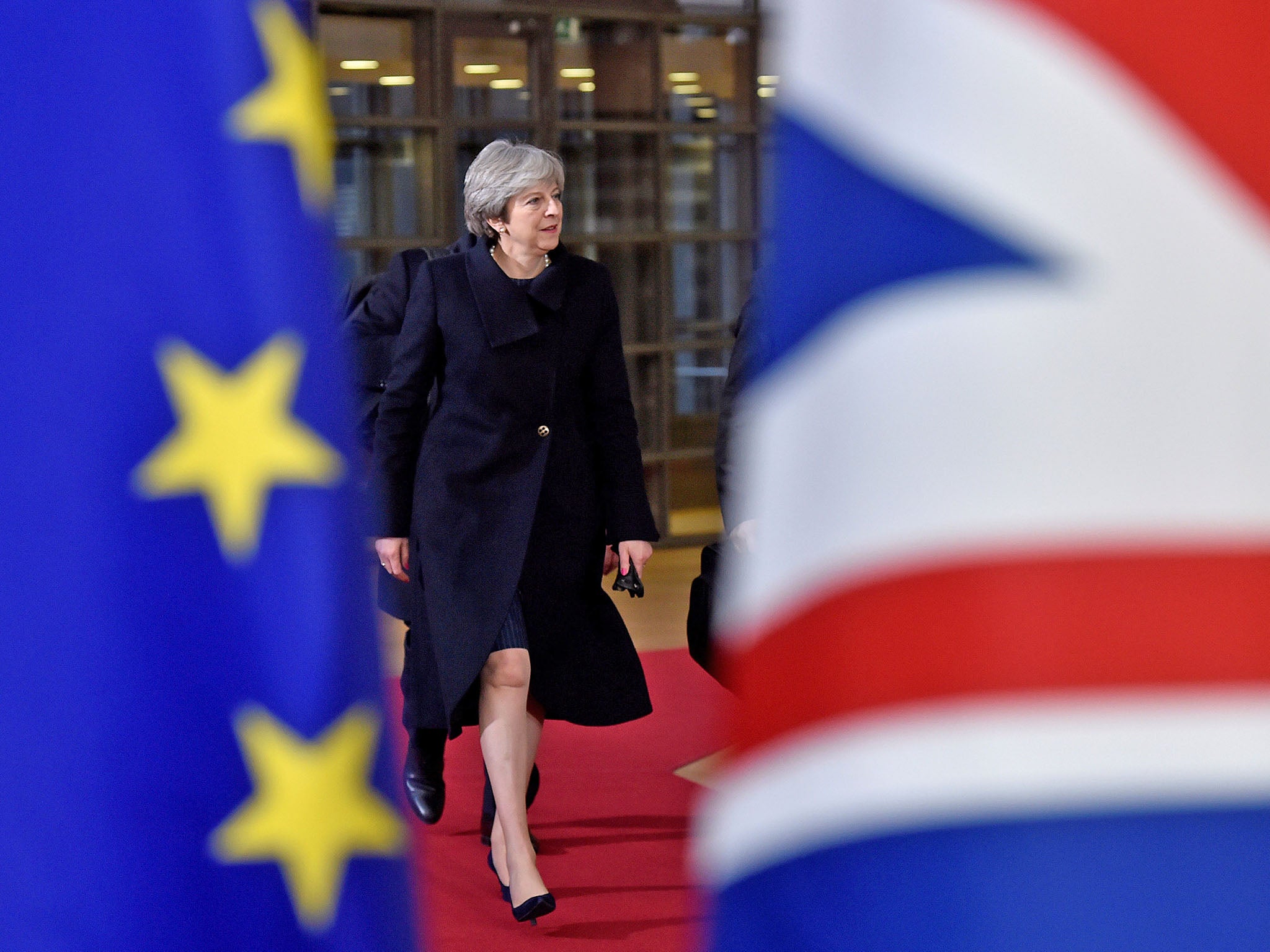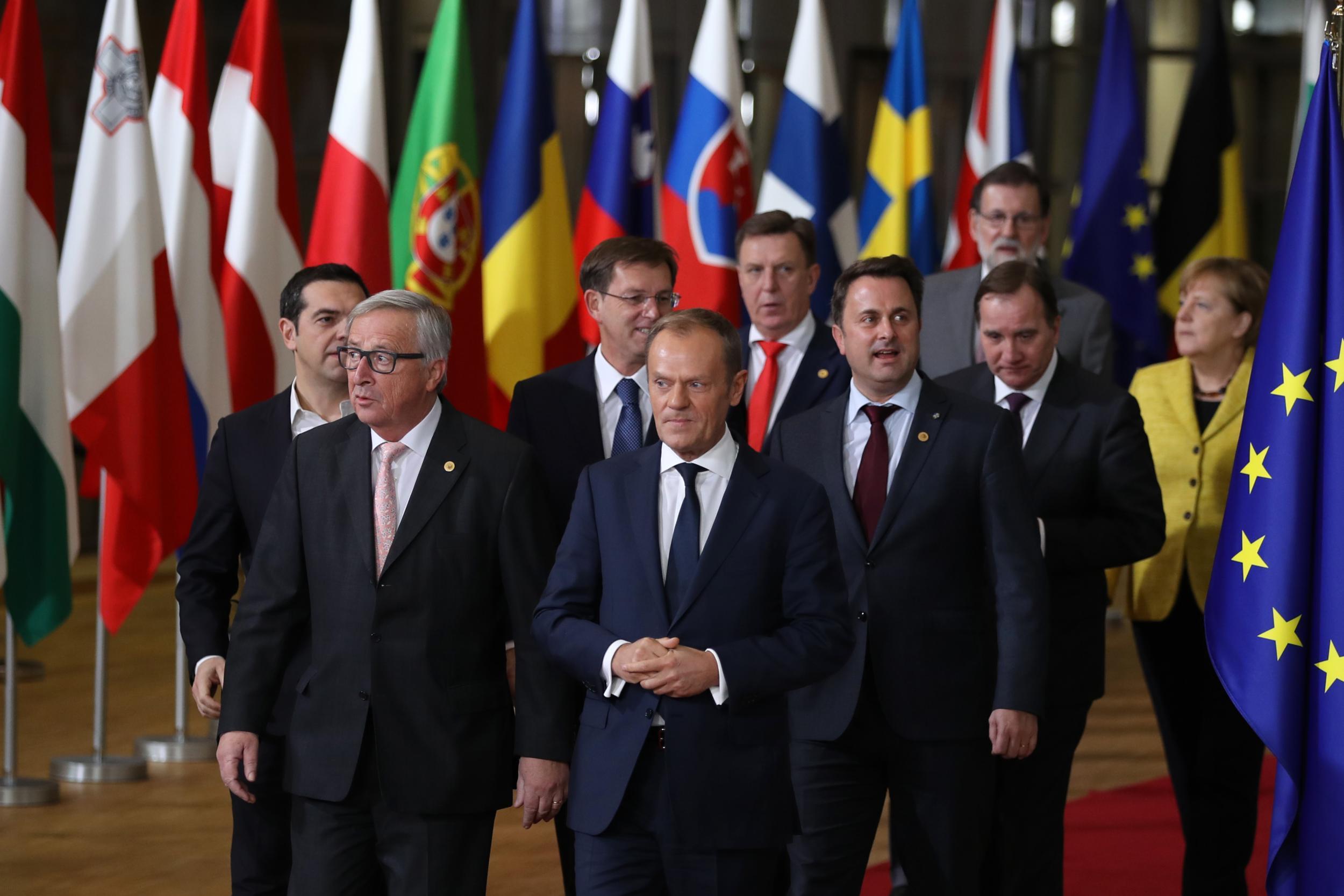How phase two Brexit talks will be the real challenge
If there is one thing that UK and EU negotiators agree on, it is that phase two of the Brexit talks will be much more difficult than the phase one agreement approved on 15 December

Friday 19 October 2018 is already ringed in Theresa May’s diary. That is the very ambitious deadline for a withdrawal agreement between the UK and EU to be signed off at a summit of EU leaders in Brussels.
If there is one thing that UK and EU negotiators agree on, it is that phase two of the Brexit talks will be much more difficult than the phase one agreement approved on 15 December. That deal kept the show on the road but masked the fact that the two sides are poles apart on both the scope and timeline of the next stage. They sometimes seem in a parallel universe. Several issues were put off until phase two – not least the Irish border and how to resolve any disputes arising later over the withdrawal agreement.
Officially, UK ministers want a “substantive trade deal” by October and a done deal shortly after March 2019. In private, minsters admit their best hope is a “heads of agreement” by exit day. Even that will be tricky. Michel Barnier, the EU’s chief negotiator, has suggested that “the real negotiation” on trade will not start until after then.
The 27 EU countries have agreed only to preliminary talks on the “future partnership”. They do things by the book, and will not produce negotiating guidelines until March, leaving just seven months until the October deadline.
The EU27 wants a “close partnership” with the UK, rather less than the “deep and special” one desired by May. It is particularly frustrated at the lack of clarity from London and is keeping things vague until Britain spells out what it really wants. But the EU’s starting point is clear: the UK cannot have its cake and eat it. So it cannot enjoy the benefits of Norway’s access to the EU market and Canada’s freedom to diverge and will have to choose between these two models of relations with the EU. There is scepticism in Brussels about the “bespoke” deal sought by May – described as “Canada plus plus plus” by David Davis, the Brexit Secretary. It would add services, which account for 80 per cent of the UK economy, to Canada’s free trade agreement with the EU on goods. But the EU is unlikely to offer a deal covering financial services.
Another row over money looms: May has implied the £40bn divorce payment will help ensure future access to the EU market, while the EU insists the UK is merely settling its bills from the past. Further payments could spell trouble for May in her own party.

Formal trade negotiations cannot start until the UK leaves the EU in March 2019 and becomes a “third country”. Although the EU will make only a “political declaration” about the long-term relationship in October 2018, British ministers insist a lot can be done by then. Because the two sides are already aligned on regulatory standards, they will not start with a blank page like the EU and Canada (whose agreement took seven years). But Brussels insiders believe the UK underestimates the scale of the task; some predict it could take five years to agree a trade deal in full.
Why is October 2018 so important when the UK will not leave until the following March? Barnier wants to leave time for EU governments and parliaments to discuss the withdrawal agreement, although they do not have to ratify it. The European Parliament needs to approve it and has a veto. But when the agreement goes before the European Council (the 27 national leaders), a single country could not block the deal as it would be decided by qualified majority voting – and require the support of 20 of the 27 nations representing at least 65 per cent of their population. In contrast, the eventual trade deal would probably need unanimous approval by EU member states’ national and 10 regional parliaments, including five in Belgium, where Wallonia famously held up the EU-Canada deal.
In practice, the October deadline could slip if the talks drag on. It is a target rather than a firm deadline. As the build-up to the 15 December summit showed, EU deadlines are not always set in stone. However, the March 2018 one for a withdrawal agreement is real – and set out under Article 50. It could be extended by the EU27 if the two sides were close to a deal. But May might be wary of a delay; it would delay the UK departure date she promised, and the two-year transition would end closer to the next general election due in 2022.
The transitional deal, which will form part of the withdrawal agreement, should be relatively straightforward. It will essentially maintain the status quo with technical changes to allow the UK to claim it has left the single market and customs union in 2019. But there are potential glitches. The EU insists the UK would have to implement new regulations during the transition, even though it will have no say over them. This contradicts one of the Foreign Secretary Boris Johnson’s red lines. It could also mean accepting EU rulings on competition policy. Tory Brexiteers want an “emergency brake” allowing the UK to block any rules not in its interests, but the EU is unlikely to give way.
Indeed, the lesson of phase one is that the EU largely called the shots over both the structure and outcome of the negotiations. So much for Brexiteers’ claims during the referendum that the UK would “hold all the cards”. It was the junior partner and May had to blur some of her red lines – notably on the European Court of Justice.
However, the playing field might not be so tilted against Britain in phase two. The UK’s attempts to “divide and rule” among the 27 failed in phase one, as they were united in seeking a decent financial settlement and deal on citizens’ rights. But the 27 will have different interests on trade and so a “charm offensive” by the UK might pay dividends – especially among those countries with close trading links such as the Netherlands, Belgium and Ireland. Dublin might yet become more of a friend than foe.
Still, there will be plenty of hurdles for the UK. Having flexed its muscles once, the Democratic Unionist Party is bound to rock the boat again; it knows May cannot afford to ignore it.
Will May still be in Downing Street for the October day in her diary? She ended 2017 in a surprisingly strong position, given all the turbulence during it. She is nothing if not resilient. If she continues to make progress, however slowly, and Brexit remains on track. She might again defy predictions of her political downfall. The EU wants a deal, and fears May could be toppled by its bête noir, Johnson; paradoxically, May’s weakness at home could again prove a strength in the negotiations.
By not stating her own views on the long-term EU relationship, May won plaudits from Tory pro-Europeans and Brexiteers for her stage one deal. But support for her remains shallow; she has already used up several of her political lives. One big mistake could be the final straw, and take the number of Tory MPs demanding a vote of confidence in her as party leader over the required 48. It could be triggered by a non-Brexit crisis. Or if Eurosceptics conclude that, despite May’s hard Brexit rhetoric, she is pursuing a soft Brexit.
May cannot sit on the fence forever and will have to declare her hand on the “end state” relationship. That will make it harder to hold the Cabinet and Tory MPs together. Some hardline Brexiteers are biding their time, waiting for a moment to push for “no deal” and a clean break in 2019.
The Prime Minister would like to stay until the spring of 2019 to complete the Brexit process. Although she enhanced her prospects of doing so by clinching a phase-one deal, she surely knows there is no guarantee she will still be there to finish the job.
October 2018 might just go down in history for another reason. MPs who want to delay or block Brexit will make one last stand when the Commons gets its “meaningful vote” on any deal. They might try to extend the negotiations or, if there is public support, even call for a referendum on the deal. It could be a momentous month.
Join our commenting forum
Join thought-provoking conversations, follow other Independent readers and see their replies
Comments